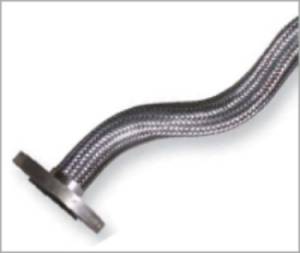
Regular hoses such as rubber hoses just can’t cope with extreme heat – they warp, melt, and eventually fail. That’s why factory managers dealing with scorching temperatures often buy stainless steel hoses instead. If you’re dealing with extreme heat in your operations, it is best advised by the experts to buy stainless steel hoses that can work under extreme heat and pressure.
What makes people buy stainless steel hoses for hot environments? Mostly because of its chemical and mechanical properties, which work with several industrial applications and offer peace of mind. Nobody wants to deal with burst pipes, leaking fluids, or worse – dangerous workplace accidents that could have been avoided. These stainless steel hoses keep going when the heat cranks up, protecting both machinery and the employees who operate it.
How Much Heat Can They Actually Take?
Most standard stainless steel versions handle temperatures around 800°C without breaking. Quite impressive, right? The secret lies in the chromium that’s mixed into the metal. This clever addition creates a sort of invisible shield that stops the material from giving up when things get properly hot.
Different situations need different grades of steel, though. Regular 304 grade works fine for moderately hot applications. But push beyond 650°C, and you’d best upgrade to something tougher like 316 or 321. These beefed-up versions have extra ingredients mixed in – stuff like molybdenum or titanium – that keep them strong even when temperatures swing wildly up and down all day long.
Applications Requiring High-Temperature Hoses
Petrochemical processing is one of the most challenging applications for fluid transfer components. Refineries constantly work with superheated steam and volatile compounds at temperatures that would quickly decimate lesser materials. In these cases stainless steel hoses, correctly specified, prevent expensive production stoppages and hazardous leakage.
Likewise, steel manufacturing facilities rely on these types of components to keep molten metal processes and cooling systems running. Once again, between blast furnaces and continuous casters temperatures vary widely and severely — and put any installed equipment to the test. Stainless steel hoses don’t suffer under those punishing conditions; they stay flexible and intact.
Cost-Benefit Analysis Beyond Initial Investment
Although initial procurement costs are higher than rubber or plastic alternatives, it is the integrated lifecycle costs that are the true economic basis for analysis. Standard hoses used in high-temperature environments fail regularly, leading to substantial downtime and maintenance costs that quickly outstrip the increased capital cost of stainless steel alternatives.
In fact, the dependability element holds significant importance in vital industrial stages. Hose failure — which is often the cause of production disruptions — can lead to thousands of pounds worth of lost output per hour. This only speaks of operational security, which in many industrial contexts justifies the premium for quality stainless steel components.
Conclusion
Going for quality stainless steel hoses in hot environments isn’t just sensible – it’s a smart business move. While the initial outlay might make the accounts department wince, the reduced downtime and longer service life soon pay dividends. For places where failures aren’t an option (and let’s face it, who wants failures?), talking to specialists who know their onions about both the technical bits and practical realities can make all the difference between smooth sailing and costly disasters.


Leave a Reply